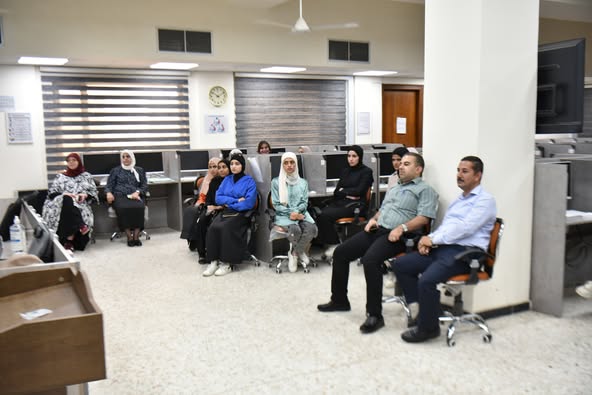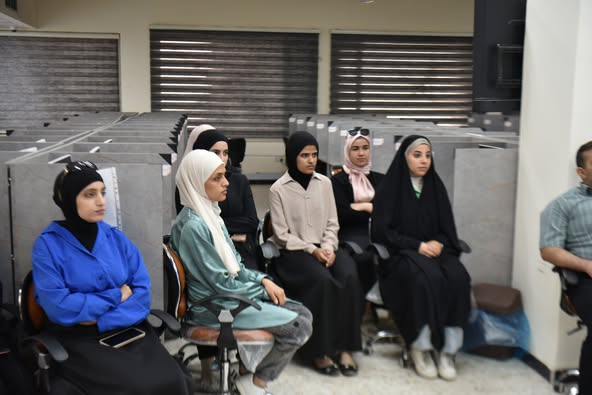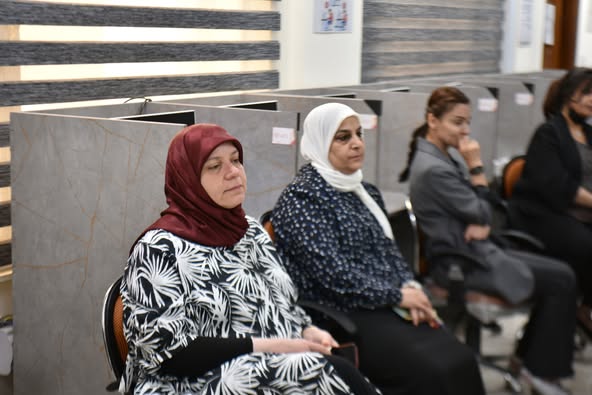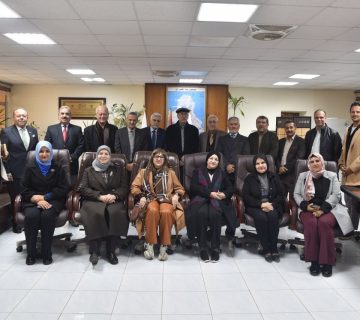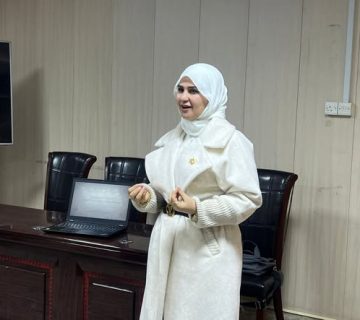Under the patronage of the Dean of the College of Science for Women, Professor Dr. Sameera Naji Khdim, the Department of Mathematics, in collaboration with the Continuing Education Unit, held a workshop entitled “How to Write a Research Paper for Top Scientific Journals.” The workshop was presented by Dr. Jalal Hatim Hussein, Dr. Shireen Ouda Dakhil, and Dr. Aseel Hussein Ali.
The workshop aimed to explain how to write a research paper that meets the standards of top-tier scientific journals. Achieving this requires a combination of scientific accuracy, high-level academic writing, and a deep understanding of the nature of the targeted journal. The first step involves selecting a novel research topic or offering a significant contribution to an existing topic. The subject must be clear, well-defined, and possess genuine scientific significance, whether in advancing theory or practical application.
A high-quality research paper is grounded in a strong research question or a clear, testable hypothesis using recognized scientific tools and methodologies within the relevant field. Additionally, it should include a comprehensive literature review that surveys existing work on the topic, identifies current knowledge gaps, and utilizes appropriate statistical analysis tools or qualitative and scientific methods as required by the subject. Choosing the most suitable methodology, rather than the easiest one, is essential.
The structure of a research paper begins with a clear, precise, and engaging title, followed by a coherent presentation of objectives, methodology, results, and conclusions. The methodology section should detail how the study was conducted, including the tools used, the research sample, and analysis methods. Results should be presented objectively, using tables and figures to enhance understanding, without interpretation at this stage.
The discussion section is where the results are interpreted, the scientific contribution is clarified, the study’s limitations are acknowledged, and future research directions are proposed. In terms of language and style, the paper must be written in clear, precise scientific language, free from redundancy and verbosity. Careful linguistic revision is necessary, and it is advisable to have the paper reviewed by a professional scientific editor.
Adherence to the target journal’s submission guidelines—regarding formatting, style, and word count—is also crucial. When submitting the paper, a cover letter should be included that outlines the importance of the research and the rationale for choosing the specific journal. After submission, the peer review stage may require revisions. It is essential to respond to such revisions seriously and professionally, in accordance with the journal’s or field’s standards.
